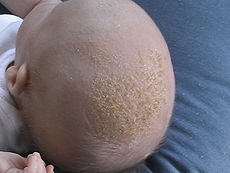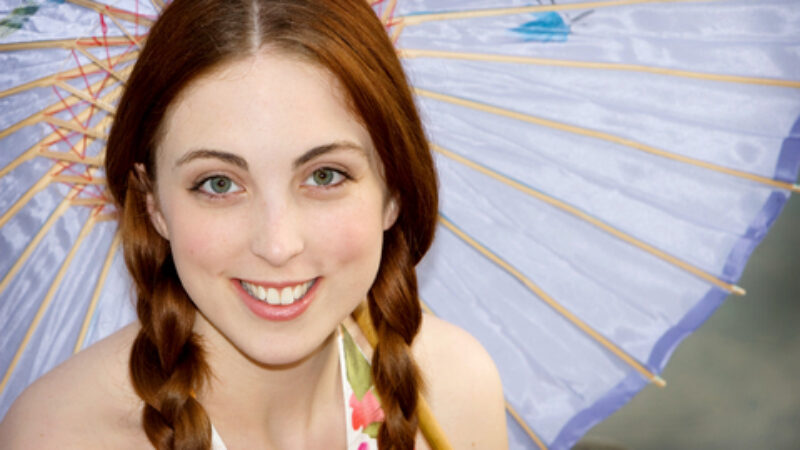Cradle cap (also known as infantile or neonatal seborrhoeic dermatitis) is a greasy, scaly and crusty rash that occurs on the scalp of new babies. While it looks terrible (especially to anxious parents), this yellowish rash doesn’t itch and appears not to bother the baby.
Cradle cap is most often found in the first three months after birth. It tends to appear around the ears, the eyebrows or the eyelids but can appear elsewhere on the body also. Although there isn’t any clear consensus on the cause of cradle cap, a fungal infection or overactive sebaceous glands are thought to be implicated. Other factors may include a biotin deficiency.
While it often resolves on its own, cradle cap may require treatment if caused by a fungal infection. If this is the case, seek medical attention for treatment with an antifungal agent. Mild cases may be treated with gentle washing as the condition tends to resolve on its own.
Home remedies include the application of olive oil, mineral oil or petroleum jelly to soften the scale, which can then be gently brushed away. In some cases, this has been known to worsen the condition. There is some evidence that the topical application of tea tree oil and borage oil may be effective. Some sources encourage frequent shampooing, while others discourage it. Dandruff shampoos containing salicylic acid tend to irritate the condition so they are generally not recommended. In moderate to severe cases, ketoconazole shampoos are often recommended.




In some cases there may also be an overgrowth of fungus in the hands..Athlete s Foot is the most common type of fungal infection that is popularly known as Tinea infection. However medical tests may be performed in cases where rise of many symptoms makes diagnosis difficult.
Thanks for finally talking about >Cradle Cap – PhaMix
<Loved it!